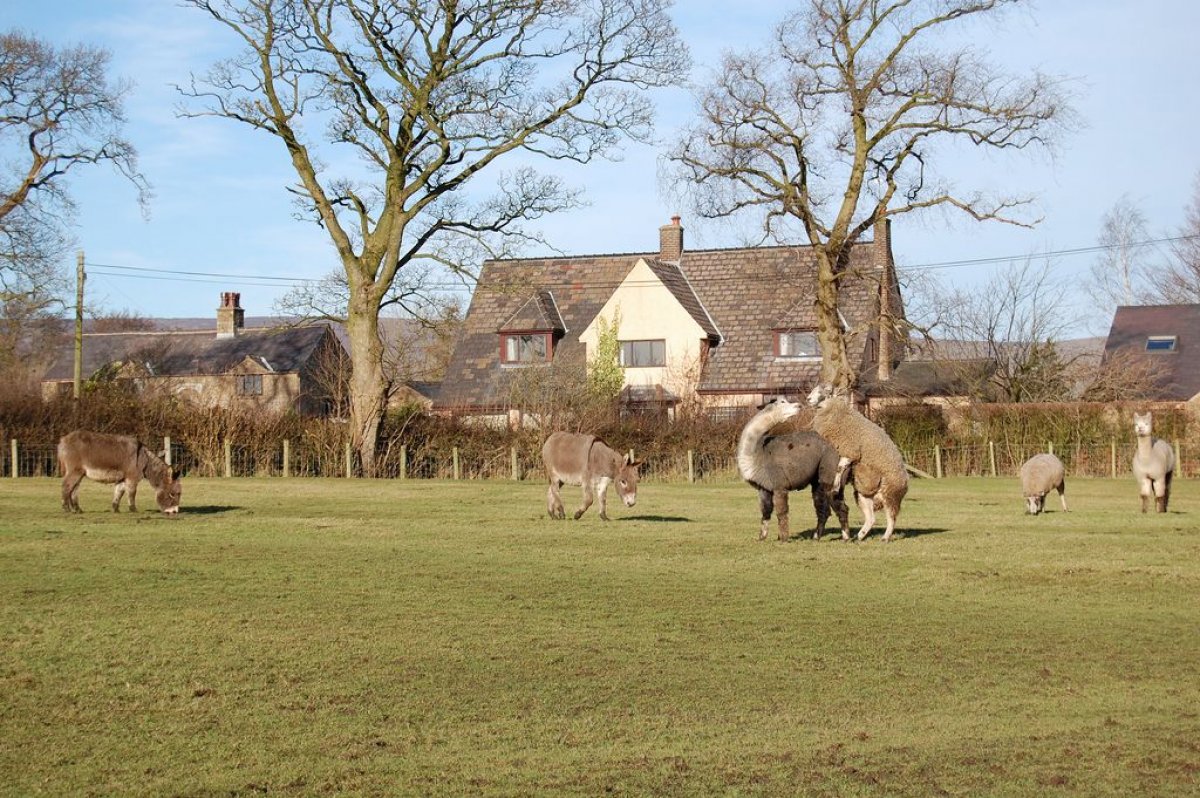
Last week, scientists published research on monkeys mounting deer in a sexual way. This interaction may seem pointless from an evolutionary point of view, but as it turns out, the striking behavior is fairly common in the animal kingdom.
Many people have seen this exact phenomenon at play with non-neutered male dogs (and cats, ducks, sheep and bulls). They are often willing to copulate with any female, male, animal, leg, or inanimate object that can be physically mounted. Dead or alive, it doesn't matter.

But considering that sex is driven by the need to keep the species going, interspecies mating is confusing. After all, the behavior doesn't lead to reproduction— a dog cannot produce puppies with a pillow.
The urge may be propelled by another feature of life: sexual frustration. When an animal has pent-up sexual energy, it wants to release it. In the absence of nearby, fertile members of the same species, an animal of a different species might have to do. Scientists call this phenomenon "misdirected mating," and is a type of "reproductive interference."
Scientists have observed a variety of species mating in a misdirected way repeatedly. In Antarctic fur seals, one dominant male often mates with a harem of females, leaving the other males sexually frustrated. In 2015, researchers at the University of Pretoria in South Africa documented multiple accounts of males sexually attacking king penguins.
Notably, one fur seal that was unable to mount a penguin "tore the bird to shreds and ate it," one of the researchers told The New York Times.
Other times, like in the case of the monkeys mounting the deer, the propositioned species doesn't seem to mind.
Some interspecies sex can be beneficial to the surviving offspring, if they are genetically close enough (this depends a bit on how you define "species"). These groups of animals can come together and make brand-new creatures. Coyotes and wolves make coywolves, and grizzly bears and polar bears make "grolar bears."
Sometimes, the new species have different beneficial genes from both of their parents, and are able to survive better. Once, a single finch from one Galapagos island flew to another island and started a hybrid population between two finch species.
The internet is full of examples of interspecies sex. Sometimes, that behavior is misidentified as cute "riding" behavior. Ever see a frog "riding" a fish? They're actually engaging in "amplexus," in which the male frog holds onto his partner until she releases eggs, a behavior usually reserved for female frogs.
Whether monkey with deer, seal with penguin, or puppy with pillow, interspecies sex appears to be a simple fact of nature.

Uncommon Knowledge
Newsweek is committed to challenging conventional wisdom and finding connections in the search for common ground.
Newsweek is committed to challenging conventional wisdom and finding connections in the search for common ground.
About the writer
Kristin is a science journalist in New York who has lived in DC, Boston, LA, and the SF Bay Area. ... Read more
To read how Newsweek uses AI as a newsroom tool, Click here.








